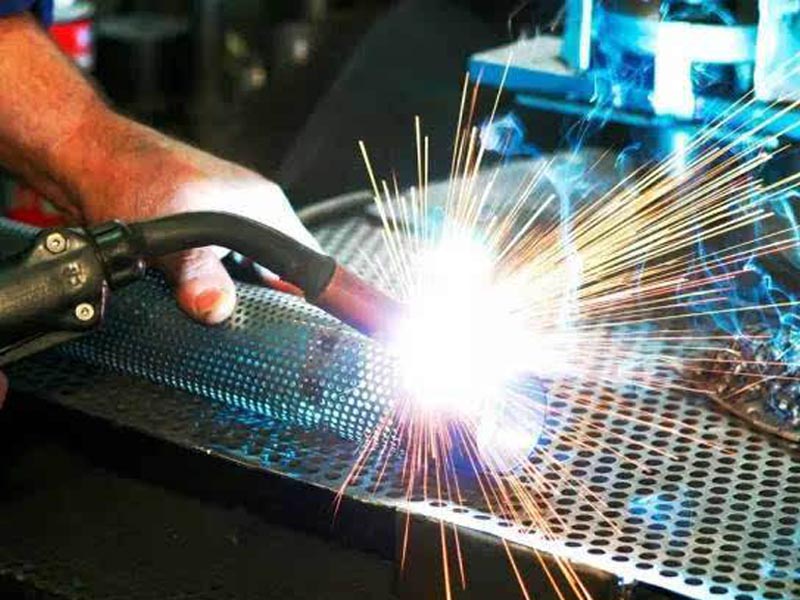Regarding the welding of titanium alloys, many of our friends will encounter various welding problems during operation. At present, for titanium alloys, argon arc welding, submerged arc welding, vacuum electron beam welding, etc. are mostly used, but both methods are required. Filled with welding materials, due to the limitation of protective atmosphere, purity and effect, the oxygen content of the joint is increased, the strength is reduced, and the deformation after welding is large. Using electron beam welding and laser beam welding, the welding processability of titanium alloys has been studied to achieve precise welding of this material. The following points can be discussed together:

(1) Porosity of welds. The pores in the weld are the most common defects in welding titanium alloys. Hydrogen and oxygen in the arc area of the welded metal are the main reasons for the pores. TC4 titanium alloy electron beam welding has few pore defects in the weld. To this end, focus on the study of the process factors of the formation of pores in the laser welding seam. It can be seen from the test results that the pores in the welding seam are closely related to the weld line energy during laser welding. If the welding line energy is moderate, there are only a few or no pores in the weld seam. The line energy is too large or too small All will lead to serious blowhole defects in the weld. In addition, whether there are blowhole defects in the weld is also related to the wall thickness of the weldment. Comparing the test results of the samples, it can be seen that the probability of blowholes in the weld increases as the weld wall thickness increases.
(2) Internal quality of the weld. Using flat butt joint samples, using electron beam welding and laser welding to inspect the internal quality of the weld, managerial inspection, the internal quality of the weld has been X-ray flaw detection, and meets the requirements of GB3233-87 level II, no cracks on the surface and inside of the weld , The appearance of the weld is well formed and the color is normal.
(3) Welding depth and its fluctuation. Titanium alloy is used as an engineering component, which has certain requirements on the welding depth, otherwise it cannot meet the strength requirements of the component; and to achieve precision welding, the fluctuation of the welding depth must be controlled. To this end, two pairs of butt test rings were welded using electron beam welding and laser welding methods. After welding, the test rings were longitudinally and laterally dissected to investigate the welding depth and welding depth fluctuations. The results show that the electron beam welding seam The average welding depth can reach more than 2.70mm, and the fluctuation range of welding depth is -5.2~+6.0%, not more than ±10%; the average welding depth of laser welding seam is about 2.70mm, and the fluctuation range of welding depth is -3.8~+5.9% , No more than ±10%.
(4) Analysis of joint deformation. The butt test ring was used to investigate the welding deformation of the joint, and the radial and axial deformations of the butt test ring were detected. The results showed that the deformation of the electron beam welding and laser welding were very small. The radial shrinkage of electron beam welding is f 0.05~f 0.09mm, the axial shrinkage is 0.06~0.14mm; the radial shrinkage of laser welding is f 0.03~f 0.10mm, and the axial shrinkage is 0.02 ~0.03mm.
(5) Weld structure analysis. Managerial inspection, the weld structure is a+b, the structure is columnar crystal + equiaxed crystal, a small amount of lath martensite appears, the grain size is close to the matrix, the heat affected zone is narrower, and the structure and characteristics are more ideal.
(6) Commonly used welding methods for titanium and titanium alloys include: argon arc welding, submerged arc welding, vacuum electron beam welding, etc. Tungsten arc welding is used for thickness below 3 mm, and argon arc welding for melting electrode above 3 mm. The purity of argon is not less than 99.99%, and the content of air and water vapor in argon is strictly controlled.
(7) Surface treatment of degreasing, descaling and deoxidizing film before welding. Because titanium and titanium alloys have high chemical activity and are easily contaminated by oxygen, nitrogen, and hydrogen, they cannot be welded by electrode arc welding, oxyacetylene (or oxypropane, etc.) gas welding, C02 welding, or atomic hydrogen welding.
(8) Two important points for argon arc welding. The first point is the protection of the environment. The purity of the gas must be high enough. This is an important factor for welding quality. The other is the high purity of the welding wire. It is recommended to use VOD301 titanium alloy welding wire. Refer to the topic of high-quality pure titanium welding wire titanium alloy welding wire titanium alloy argon arc welding wire VOD301 titanium welding wire
(9) Titanium alloy welding should be protected in time, and parts above 300 degrees should be continuously protected by protective gas. Back protection and exhaust protection when welding
According to the research, it can be concluded that for titanium alloy, whether it is laser welding or electron beam welding, as long as the process parameters are properly matched, the internal quality of the weld can meet the requirements of the national standard GB3233-87 Ⅱ grade weld, precision welding of titanium alloy; The appearance is well formed and the color is normal; the residual height of the weld is very small, and there are no defects such as undercuts, depressions, surface cracks and the like.